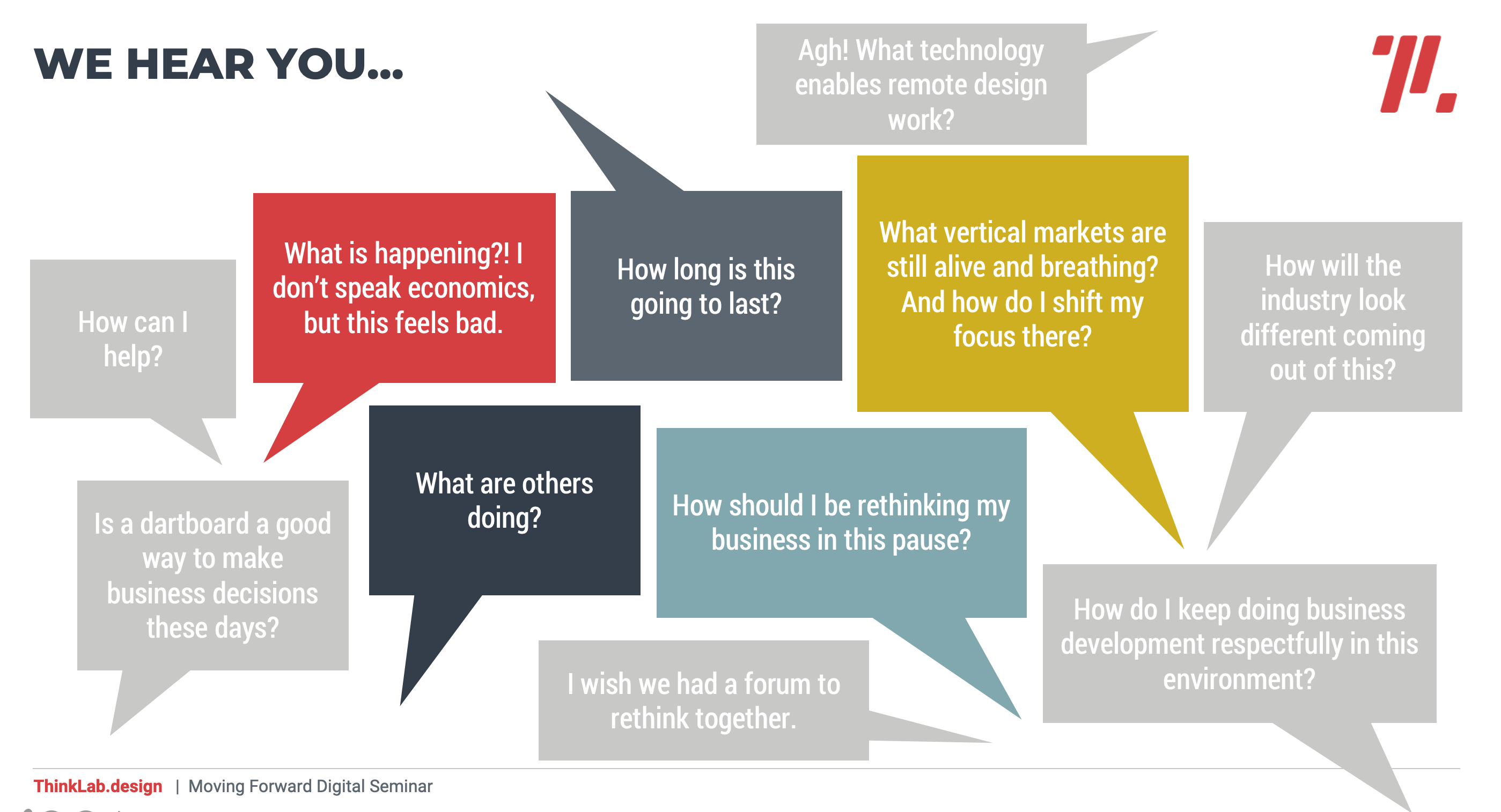
“The financial crisis is a stark reminder that transparency and disclosure are essential in today’s marketplace.” This quote from U.S. Senator Jack Reed reminds us of the importance of being forthright and working together toward a common goal. It’s incredibly relevant today, as the global economy feels the effects of Covid-19 and we must share best practices to collectively move forward. That said, would it come as a surprise that Senator Reed’s message was delivered in 2009, shortly after we began to experience signs of recovery from the Great Recession of 2008?
People in the interiors industry today seem to fall into two categories: Those who remember the downturn of 2008 and those who don’t. For those who do remember, one lesson seems abundantly clear: act fast, act early, and since this may be a marathon (and we don’t yet know where the finish line is), pace yourself. For those who don’t remember, it may feel like the sky is falling. For both audiences, the group advice seems to be: This too shall pass.
On April 1, Henricksen gathered a group of 40 representatives from corporate real estate, A&D, construction, and product (manufacturers, dealers, and installation) to talk about their industry’s status and outlook, with the goal of providing a forum for asking questions, comparing notes, and networking with peers.
The conversation focused on business challenges, keeping up relationships, and stabilization efforts around business development and marketing. Circling back to Senator Reed’s sentiments, the discussion was filled with disclosures and transparency as the group worked to piece together a roadmap toward understanding what is happening and how to prepare for eventual recovery. And while no one has a defined roadmap charted out yet, their collective viewpoints lead us in the right direction.
Insights from CRE: Things are still moving, happening. People are getting creative.
In the world of commercial real estate, the story is characterized less by a stop sign and more by a redirect signal. Spaces are still being shown, but with creative measures. Video walk-throughs are popular, as is the practice of arriving early, unlocking the door, and then waiting outside as the client walks through the space alone.
John Wichman, multimarket account manager at Cushman & Wakefield, shared insights into some of the technological advances that keep businesses running: “We have to start thinking outside the job we normally do. How do we get the visual information to people who need to see it? Some folks are using software called Matterport, while others are using StructionSite, which is more economical.”
Insights from Construction: Construction is still essential in many markets, where it continues. For those where it isn’t, there’s more concern about implications in the latter part of the year.
The construction industry is learning that things that seemed catastrophic last week are normal today. But as some projects slow down, looming in the back of everyone’s head is the notion that this backlogged work will have to pick up at some point. In response, many companies are forgoing layoffs and tightening their belts in other areas so when the dusts settles, they’ll be ready to move forward, full steam ahead.
Insights from A&D: We are struggling to suddenly reframe workflows to remote. As a result, several projects are on hold due to uncertainty, but not cancelled and therefore we must consider how things will look when we return. We are just starting to see many firms apply their creativity to predictions about the future.
In Chicago, McCormick Place transitioned from an event center to a hospital, seemingly overnight. Across the country, retail/shopping malls are being repurposed and hotels are becoming hospitals or living facilities for hospital staff who don’t want to return home and risk infecting their families. As A&D struggles to keep up with the sudden influx of project shift changes, they’re also juggling the new challenges of remote work. So, in similar fashion to the construction industry, many firms are left juxtaposed between moving forward and planning for the future.
As Alex Lopatynsky, principal and managing director of Cooper Carry’s New York office, explained: “We’re seeing projects on ‘hold’ but not cancelled. Most of our current work is in early stages and is progressing, but the construction admin stage is tough to fulfill since it (traditionally) requires being on-site, in-person.”
Insights from Product Providers: The state-by-state variance in the definition of “essential business” is affecting product manufacturers. As a result, dealers are sorting through their checklists while installation firms are still going strong where possible.
The consensus remains that while there may be some demand for workplace alterations when stay-at-home orders are lifted, product features like “sneeze guards” will be a fad that may address initial fears but will likely fade as things return to normal. However, installation firms are still moving forward with previously planned projects… but with caution, being mindful of the rules affecting each individual state.
As the group concluded, Henricksen shared insightful recommendations pulled from the crash of 2008. First, they expect prices to go down across the board, with prices for some subs going up. We’ll start to see more bidders looking at a single project.
Russell Frees, president and CEO of Henricksen, left us with this hopeful look toward the future: “We have to be stewards and make people feel safe. We’ll do this by taking measures, evaluating situations, and letting our clients know where were stand with their projects. By staying positive and transparent, we can help our clients make the best decisions for their future.”
If you’re interested in up-to-date metrics on where the industry stands delivered right to your inbox, ThinkLab has launched a research study that can help. Among other data points, last week’s report shared that 60 percent of projects are still continuing as planned, though vary greatly by geography and vertical market. If you’d like to receive these metrics, take our survey here, and we’ll email you the results.
This article originally was published in Bellow Press and was reposted here with permissions.
Amanda Schneider is President of ThinkLab, the research division of Interior Design Media. At ThinkLab, we combine Interior Design Media’s incredible reach within the architecture and design community with proven market research techniques to uncover relevant trends and opportunities that connect back to brand and business goals in a thought-provoking, creative, and actionable way. Join in to know what’s next at thinklab.design/join-in.


